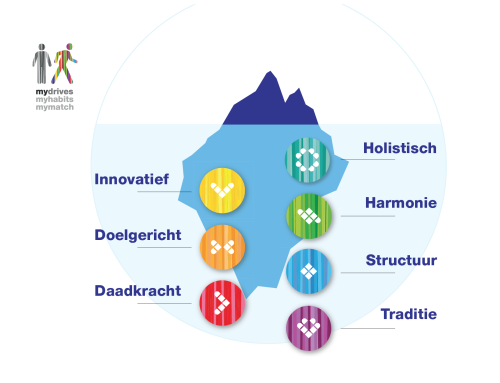This is the 3rd edition of the newsletter 'Your Sales Playbook'. A newsletter where we talk about all things related to HOW you can further strengthen, build and capture 'Your Way of Selling', your own unique way of selling. It's about implementing sales processes and best practices. How you can help yourself, colleagues and employees, with winning behaviors, enable growth in your sales organization.
Each week I share one idea, mindset or approach that sales leaders and teams can use to enable consistent growth for their organization. Whether you're a sales director, sales manager, marketing manager or member of the sales team - ready to accelerate sales and marketing performance - you'll always find one topic highlighted with practice-oriented insights that you can implement to get you one step closer to your goals.
My mission is to help you and your organization be more successful in finding, engaging and developing customers.
Now, on to this week's topic and the first tips for getting started! ??
================================================================
"Do's and don'ts!" of a Sales Plan. Recognizable?
'You made another Sales Plan ... drank a glass, took a pee and then it went back to the way it was.' This, unfortunately, is how the annual ritual rain dance of the Sales Plan usually goes in practice. Deadly waste of the time it took, but it can be done differently. So how to.
First, let's look at how you usually go about it and why this is often quite useless. Then we'll briefly go into how it can be done. Of course, we'll go into this in much more detail, of course, in our Strategic Sales Planning Master Class, which will take place again soon.
What usually goes wrong ...
The thought and intent is often good, but the execution rattles. Here are 7 areas why creating a Sales Plan often turns out to be a completely useless, time-consuming and costly exercise:
1) You spend a lot of time doing internal and external analysis. With lots of spreadsheets full of misleading average numbers and non-specific qualitative considerations ov the internal situation. And of course external analyses that you have at least shaped using (DE)STEP or for example a 5 Forces Model from Porter. Of course you deepen the competitive subsection, from the last mentioned model, and have also added a clear 'Competitor Array' analysis. Because that's what you learned during the courses that you obviously went through earlier.
The only pity is that these internal and external analyses are often formulated in too general a manner, they are full of meaningless container terms and superlatives. In addition, best- and worst-case scenarios are mostly missing. All this means you usually can't do much with them. So you can immediately put a question mark over all the time it takes to make these analyses. But let's assume for now that it is done properly.
2) We naturally summarize our findings in the well-known SWOT. Often people don't know how to distinguish well between opportunities and threats versus strengths and weaknesses, but again, let's assume that you do this well. Well, and then. You're many hours and maybe days down the road and now you have a few phrases in a matrix, but what is most important for your sales plan and how do these strengths, weaknesses, opportunities and threats interact?
Anything that is vague does not invite concrete action and thus remains in place.
3) Fortunately, there is such a thing as a confrontation matrix. A handy tool that does help to make your SWOT concrete and derive clear priorities from it.
Unfortunately, this tool is often not pulled out, but let's continue with the premise that you do apply it.
4) Now we get the dilemma between what we work out first, the "Chicken" or the "Egg. Namely what do you define first? The strategy or the goal? The booklet says Mission, Vision, Strategy and then the rest. However, many organizations do not have a clear Mission and Vision at all. Or they do have them, but when asked, every manager says, "Uhhh, yes I think we do, but I'll have to look it up.
Then when you look closely at the Mission and Vision, there has been non-conforming business for years. So why suddenly start conforming to this in the coming year. Fortunately, this immediately solves the "Chicken/Ei" dilemma and we can start from the objective first.
5) Objectives. Usually financial objectives rain into the organization from management. Strange because sales, profits, EBITA, etc. are usually the result of higher set goals, aka BEHAs (Big Hairy Andisious Goals) that are often missing.
There are plenty of YouTube videos on the subject, with Simon Sinek being the most popular among so called leaders. But, as so often, watching these videos en masse does not necessarily mean acting on them. So, in most organizations, setting mainly only financial goals are the only standard.
Fortunately, these targets are often very predictable. First, the financial target is always higher than last year. Regardless of what came out of your previously made analyses. So how well you did those analyses before doesn't matter much now and you don't have to worry about it now.
So what are the financial objectives mostly based on? In a publicly traded company, this is also fairly simple. Just based on what the shareholders would like to see and the CEO previously promised when he or she was appointed.
Are there any other objectives? Often not really, but sometimes there are some other vaguely stated goals that were on someone's wish list somewhere. Fortunately, you can quickly brush those aside when the financial goals come under pressure.
6) Now on to formulating the strategy anyway.... For this, wonderful models have been developed by, for example, Ansof (Ansof Matrix), Boston Consulting Group (BCG Matrix) or, for example, Tracy & Wiersema. Every commercial or business trained college student or academic has had to learn them at some point. Funnily enough, even these mostly very useful models are not pulled out. Instead, woolly approaches are often formulated from which it also appears that the creators have also forgotten, what is actually difference between strategies and tactics, but that aside.
7) The approach of what who, what how and when to do specifically now. Well considered the most important part of the Sales Plan. By now we are many pages of vague prose and pictures down the road, so we usually don't have much time to write down a good approach now either.
Fortunately, every year you get away with only one or two pages for this section. You just clearly state where you want to be by the end of next year. You don't really take into account how much time and resources those great goals and vistas really cost. Of course, you clearly write down what all the more work needs to be done, but of course you don't tell all the things you're not going to do anymore to free up the time and resources needed for all the more work. Never mind that you take into account when any additional people and resources you might ask for to get the job done are actually available in practice.
Also, by "backwards" planning, you don't lay down where you should be next year after 9 months, 6 months, end of Q1 and thus end of January with everything in order to successfully meet your year-end goal at the end of the year. The great advantage of this is that at the beginning of the year you can keep thinking that everything is achievable. After all, it's so long before it's December again. You won't have to worry about the last few months next year either, because everyone will suddenly see that some things will never be achievable because you only have 2-3 months to go.
All the activities that need to be done, of course, you have not put them by 'name', but at 'departmental' level, so no one really feels addressed. After all, when something does not work out, you can always talk about 'us'. As a result, it is never down to an individual and that, of course, keeps things much cozier. Should something succeed, someone will always stand up and claim, rightly or wrongly, any success achieved.
The plan is ready.
An often bulky document. This seems impressive, however due to its bulkiness almost no one will actually read it. The advantage ... you are then also not critically questioned about the content.
You are almost there now.... E.a., of course, needs to be put into a flashy PowerPoint presentation to share with everyone in a nice meeting at the end of December.
We are now at least many days, often weeks and countless meetings and hours later. All time that could have been spent on winning deals, strengthening the sales funnel and generating new opportunities and leads. But hey, it's all part of the job, isn't it?
The highlight ...
We have a nice meeting and we share the plan with everyone. Nobody really feels addressed, because it's not about you but about "OURS. So it will be a nice opportunistic party.
Then we raise our glasses together, take a pee and it all goes back to the way it was. And we return to the order of the day.
The plan now traditionally disappears into a drawer. Then, when unforeseen things suddenly happen, such as a pandemic, a war that indirectly affects us, requiring the plan to be adjusted, we do nothing. Yes, we complain about these unforeseen macro-factors, but of course we don't pull the plan out of the drawer and start looking at what needs to be done differently now in order to still achieve the set goals. Again, we just wait like every year until Q4 and just then do our ritual rain dance all over again.
How then?
- Start the plan with what, who, why and when to finish. Make sure this plan fits on one A4. The rest of the plan such as internal and external analyses are supporting appendices....
- Have bright Milestone's
- "Go where the money is! So work and think from a 20/80 mindset, because not everything is equally important.
- Make people "accountable" and not just departments, but make it worthwhile for them to be successful. Tip: Annual bonuses are not the way to go. Periodic bonuses are.
- Always focus only on a maximum of 3 to 5 areas per quarter, otherwise it all becomes half-hearted. So dare to choose.
- Celebrate your interim successes, but not when you are "on target," but only when you are above target. Because you know that there are also going to be setbacks that you need to be able to absorb.
- Make it so concrete and flexible that you get real guidance from it every month and quarter for what needs to be adjusted. Use "backwards engineering," so make it clear what, who, why and when needs to be finished after 9 months, 6 months, end of Q1 and end of January. Make sure the format is such that you can see where you stand each month and adjust when developments call for it.
How you actually do all of this in practice, we like to explain during the Masterclass Strategic Sales Planning...
What topics can you expect to see in future editions:
- In three weeks, the topic of Persuasive Influencing & Persuasion will be on the agenda. Too often in sales we talk about "awarding" and can't win it enough on ratio. Too often we think that the ultimate differentiating value is in price. In this edition we anticipate the Masterclass Convincing Influencing & Persuading of the same name and give you concrete insights in how you can really distinguish yourself with a good offer so that price and the favor factor become less important.
- 'Go where the money is...' On December 14, our training institute's most impactful masterclass will take place again. The Masterclass Profit Maximization with 20/80 approach will help you and your organization excel and show 'double digit' growth rates next year.
Want to learn more about creating your own Sales Playbook and get an inside look at what this might look like? Visit www.YourSalesPlaybook.nl
Is this newsletter useful to others? Then share it via a post of your own or post a comment to this article on the weekly newsletter on LinkedIn.
#sales managers #sales professionals #sales #personaldevelopment






